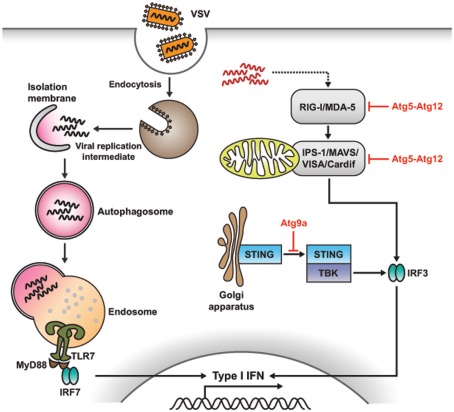Figure 5.
Role of autophagy in antiviral immune response. Autophagy and Atg proteins are required for viral sensing and regulation of antiviral immune responses. In pDCs, autophagy mediates the recognition of viral infection by delivering the viral replication intermediates in the cytosol to lysosomes, where TLR recognition occurs, which, in turn, enhances type I IFN production. However, in non-pDCs, such as mouse embryonic fibroblasts (MEFs), autophagy negatively regulates type I IFN production in response to viral infection. Atg5-Atg12 conjugates block RLR signaling by direct CARD-mediated association with RIG-I and IPS-1, resulting in the suppression of type I IFN production. In the case of dsDNA recognition, STING, a multispanning membrane protein, is translocated from the ER to the Golgi apparatus and assembled with TBK1, which phosphorylates the transcription factor IRF3, resulting in the production of type I IFN. During this process, Atg9a, an essential component of autophagy, colocalizes with STING in the Golgi apparatus, where it controls the assembly of STING.

